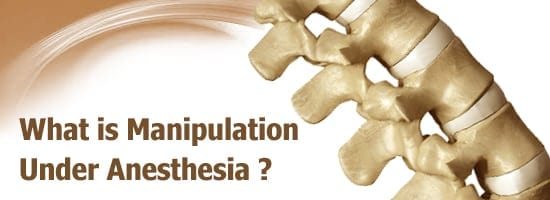
Manipulation under anesthesia, also referred to as MUA, is the practice of performing stretching, traction, and mobilization movements while the patient is under general anesthesia or moderately sedated. The practice of MUA is designed to break up scar tissue and fibrous tissue that can reduce the patient’s range of motion and result in pain.
This approach is a non-invasive alternative to other methods and is considered safe. It has been used by medical professionals for over 60 years.
Why is anesthesia used?
Anesthesia is needed during MUA to keep the patient comfortable and to keep the muscles from flexing or spasming as a result of the movements performed by the physician. Since the patient is not involuntarily resisting while under anesthesia, the physician is able to apply less force.
When is manipulation under anesthesia used?
Manipulation under anesthesia can be used in cases of acute or chronic pain, joint conditions, dislocations, muscle spasms, adhesions, frozen shoulder syndrome, fibromyalgia, pinched nerves, torticollis, restricted range of motion, injuries sustained from sports or accidents, and more. Generally, your doctor might recommend MUA if all other attempts at relief have been unsuccessful. Instead of covering up the problem, MUA helps to address the root cause of many pain issues. You may be a candidate if you have back pain that has not responded to other approaches for 6 to 8 weeks, such as chiropractic care, physical therapy, and surgery.
What can I expect from manipulation under anesthesia?
Manipulation under anesthesia involves a team approach. You will have at least an anesthesiologist and physician or chiropractor with you during this treatment. MUA is performed on an outpatient basis and takes only 15 to 20 minutes. You may require one treatment daily for up to five days, and then need sessions less frequently. Most patients experience reduced pain and improved range of motion immediately. Of course, you will need to have a consultation with your doctor to discover if this treatment method is right for you.

